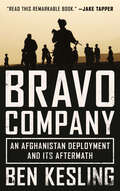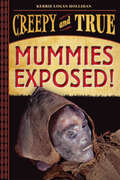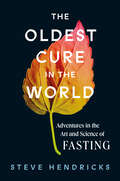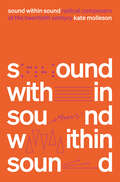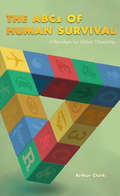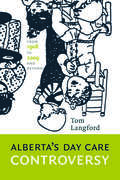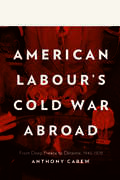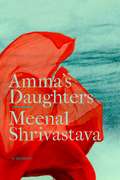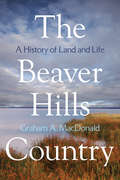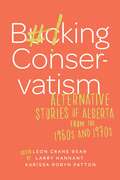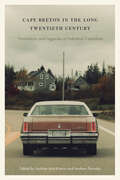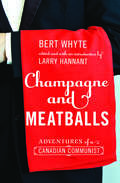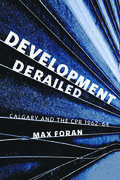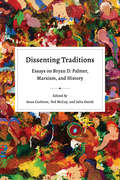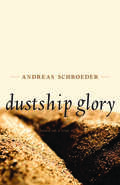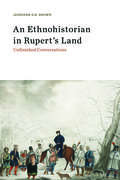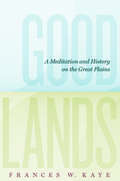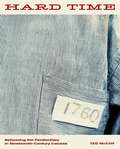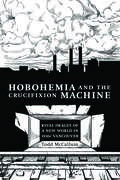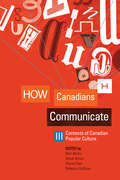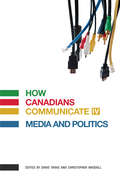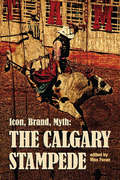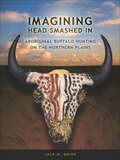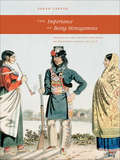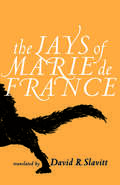- Table View
- List View
Bravo Company: An Afghanistan Deployment and Its Aftermath
by Ben KeslingA timely, powerful, and sweeping portrait of a company of men who went to war in Afghanistan, their troubled deployment, and their lives since returning home “An honest account of bravery, sacrifice, and what it means to seek redemption. As a veteran of combat himself, Ben Kesling is able to intimately and honestly document war and its aftermath in ways others haven’t.” —Jake Tapper, CNN anchor In Bravo Company, journalist and veteran Ben Kesling tells the story of the war in Afghanistan through the eyes of the men of one unit, part of a combat-hardened parachute infantry regiment in the 82nd Airborne Division. A decade ago, the soldiers of Bravo Company deployed to Afghanistan for a tour in Kandahar’s notorious Arghandab Valley. By the time they made it home, three soldiers had been killed in action, a dozen more had lost limbs, and nearly half of the company had Purple Hearts. In the decade since, two of the soldiers have died by suicide, more than a dozen have tried, and others admit they’ve considered it. Declared an “extraordinary risk” by the Department of Veterans Affairs, the members of Bravo Company were chosen as test subjects for a new approach to the veteran crisis, focusing less on individuals and more on the group. Bravo Company has an insider’s eye and ear, and draws on extensive interviews and original reporting. It follows the men from their initial enlistment and training, through their deployment and a major shift in their mission, and then on to what has happened in the decade since as they returned to combat in other units or moved on with their lives as civilians, or struggled to do so. This is a powerful, insightful, and memorable account of a war that didn’t end for these soldiers just because they came home.
Mummies Exposed!: Creepy and True #1 (Creepy and True)
by Kerrie Logan HollihanDiscover all the mysteries, facts, and discoveries about mummies that are creepy—and true—in Kerrie Logan Hollihan’s illustrated Mummies Exposed!, first in the Creepy and True series. Just when you think you know everything there is to know about mummies, new facts are unearthed. Mummies Exposed! goes beyond the familiar Egyptian mummies and uncovers the secrets of mummified bodies from around the globe. New technologies have uncovered fresh facts about old favorites, such as Ötzi the Ice Man found in the Alps, and recent findings have unearthed mummies rarely discussed before, like the Orlovits family of Vác, Hungary, laid to rest in a forgotten church crypt. Among those included are the first example of a Moche warrior priestess found in Peru, bog bodies that were preserved in Irish wetlands, the body of a Buddhist monk hidden within a sculpture, and more. The Creepy and True series explores strange phenomena, fun facts, and out-of-the-ordinary discoveries. Read them all to uncover the creepy and true histories of mummies, ghosts, skeletons, and more! The Creepy and True series:Mummies Exposed! (#1)Ghosts Unveiled! (#2)Bones Unearthed! (#3)
The Oldest Cure in the World: Adventures in the Art and Science of Fasting
by Steve HendricksA journalist delves into the history, science, and practice of fasting, an ancient cure enjoying a dynamic resurgence. When should we eat, and when shouldn’t we? The answers to these simple questions are not what you might expect. As Steve Hendricks shows in The Oldest Cure in the World, stop eating long enough and you’ll set in motion cellular repairs that can slow aging and prevent and reverse diseases like diabetes and hypertension. Fasting has improved the lives of people with epilepsy, asthma, and arthritis, and has even protected patients from the worst of chemotherapy’s side effects. But for such an elegant and effective treatment, fasting has had a surprisingly long and fraught history. From the earliest days of humanity and the Greek fathers of medicine through Christianity’s “fasting saints” and a 19th-century doctor whose stupendous 40-day fast on a New York City stage inaugurated the modern era of therapeutic fasting, Hendricks takes readers on a rich and comprehensive tour. Threaded throughout are Hendricks’s own adventures in fasting, including a stay at a luxurious fasting clinic in Germany and in a more spartan one closer to home in Northern California. This is a playful, insightful, and persuasive exploration of our bodies and when we should—and should not—feed them.
Sound Within Sound: Radical Composers of the Twentieth Century
by Kate MollesonSound Within Sound presents an alternative history of 20th-century composers—nearly all of them women or composers of color—by a leading international music critic. Think of a composer right now. Was it a white man? Perhaps in old-fashioned clothing and wild hair? The music history we’re taught is one dominated by men, and even then, only a select few enter the zeitgeist. This conventional history perpetuates the myth of “great works” created by “genius” artists. Men who enjoyed institutional privilege during their lifetimes and have since been enshrined by an industry of publishers and record labels. But just because we haven’t heard of spectacular female composers doesn’t mean they weren’t creating music all the same. Profiling a dozen pioneering 20th-century composers—including American modernist Ruth Crawford Seeger (mother of Pete and Peggy Seeger), French electronic artist Éliane Radigue, Soviet visionary Galina Ustvolskaya, and Ethiopian pianist Emahoy Tsegué-Maryam Guèbrou—acclaimed journalist and BBC broadcaster Kate Molleson reexamines the canon while bringing to life largely forgotten sonic revolutionaries whose dramatic lives and bursts of creativity played out against a backdrop of seismic geopolitical and social change. These composers, working at a remove from London, Paris, Vienna, and New York, were sidelined and ignored for systemic, structural reasons. This is a landmark alternative history of 20th-century composers; a radical, new, and truly global work of revisionist history. It is a campaigning book that challenges the status quo while introducing you to a world of groundbreaking music. Includes Black-and-White Photographs
The ABCs of Human Survival
by Arthur ClarkThe ABCs of Human Survival examines the effect of militant nationalism and the lawlessness of powerful states on the well-being of individuals and local communities?and the essential role of global citizenship within that dynamic. Based on the analysis of world events, Dr. Arthur Clark presents militant nationalism as a pathological pattern of thinking that threatens our security, while emphasizing effective democracy and international law as indispensable frameworks for human protection. Within the contexts of history, sociology, philosophy, and spirituality, The ABCs of Human Survival calls into question the assumptions of consumer culture and offers, as an alternative, strategies to improve overall well-being through the important choices we make as individuals.
Alberta's Day Care Controversy: From 1908 to 2009 and Beyond
by Tom LangfordDay care in Alberta has had a remarkably durable history as a controversial issue. Since the late 1950s, disputes over day care programs, policies, and funding have been a recurring feature of political life in the province. Alberta’s Day Care Controversy traces the development of day care policies and programs in Alberta, with particular emphasis on policy decisions and program initiatives that have provoked considerable debate and struggle among citizens. For most of Alberta’s first fifty years as a province, day care was treated as a private rather than a public issue. Beginning in the late 1950s, however, debates about day care began to appear regularly on the public record. Dr. Tom Langford brings to light the public controversies that occurred during the last four decades of the twentieth century and the first decade of the new millennium, placing contemporary issues in historical context and anticipating the elements of future policy struggles.
American Labour's Cold War Abroad: From Deep Freeze to Détente, 1945-1970
by Anthony CarewDuring the Cold War, American labour organizations were at the centre of the battle for the hearts and minds of working people. At a time when trade unions were a substantial force in both American and European politics, the fiercely anti-communist American Federation of Labor–Congress of Industrial Organizations (AFL–CIO), set a strong example for labour organizations overseas. The AFL–CIO cooperated closely with the US government on foreign policy and enjoyed an intimate, if sometimes strained, relationship with the CIA. The activities of its international staff, and especially the often secretive work of Jay Lovestone and Irving Brown—whose biographies read like characters plucked from a Le Carré novel—exerted a major influence on relationships in Europe and beyond.Having mastered the enormous volume of correspondence and other records generated by staffers Lovestone and Brown, Carew presents a lively and clear account of what has largely been an unknown dimension of the Cold War. In impressive detail, Carew maps the international programs of the AFL–CIO during the Cold War and its relations with labour organizations abroad, in addition to providing a summary of the labour situation of a dozen or more countries including Finland, France, Italy, Germany, Japan, Greece, and India. American Labour’s Cold War Abroad reveals how the Cold War compelled trade unionists to reflect on the role of unions in a free society. Yet there was to be no meeting of minds on this, and at the end of the 1960s the AFL–CIO broke with the mainstream of the international labour movement to pursue its own crusade against communism.
Amma's Daughters: A Memoir (Our Lives: Diary, Memoir, and Letters)
by Meenal ShrivastavaAs a precocious young girl, Surekha knew very little about the details of her mother Amma’s unusual past and that of Babu, her mysterious and sometimes absent father. The tense, uncertain family life created by her parents’ distant and fractious marriage and their separate ambitions informs her every action and emotion. Then one evening, in a moment of uncharacteristic transparency and vulnerability, Amma tells Surekha and her older sister Didi of the family tragedy that changed the course of her life. Finally, her daughters begin to understand the source of their mother’s deep commitment to the Indian nationalist movement and her seemingly unending willingness to sacrifice in the name of that pursuit. In this re-memory based on the published and unpublished work of Amma and Surekha, Meenal Shrivastava, Surekha’s daughter, uncovers the history of the female foot soldiers of Gandhi’s national movement in the early twentieth century. As Meenal weaves these written accounts together with archival research and family history, she gives voice and honour to the hundreds of thousands of largely forgotten or unacknowledged women who, threatened with imprisonment for treason and sedition, relentlessly and selflessly gave toward the revolution.
Bucking Conservatism: Alternative Stories of Alberta from the 1960s and 1970s
by Leon Crane Bear Larry Hannant Karissa Robyn PattonWith lively, informative contributions by both scholars and activists, Bucking Conservatism highlights the individuals and groups who challenged Alberta’s conservative status quo in the 1960s and 70s. Drawing on archival records, newspaper articles, police reports, and interviews, the contributors examine Alberta’s history through the eyes of Indigenous activists protesting discriminatory legislation and unfulfilled treaty obligations, women and lesbian and gay persons standing up to the heteropatriarchy, student activists seeking to forge a new democracy, and anti-capitalist environmentalists demanding social change. This book uncovers the lasting influence of Alberta’s noncomformists---those who recognized the need for dissent in a province defined by wealth and right-wing politics---and poses thought-provoking questions for contemporary activists.
Cape Breton in the Long Twentieth Century: Formations and Legacies of Industrial Capitalism (Working Canadians: Books from the CCLH)
by Lachlan MacKinnon Andrew ParnabyThe emergence, dominance, and alarmingly rapid retreat of modernist industrial capitalism on Cape Breton Island during the “long twentieth century” offers a particularly captivating window on the lasting and varied effects of deindustrialization. Now, at the tail end of the industrial moment in North American history, the story of Cape Breton Island presents an opportunity to reflect on how industrialization and deindustrialization have shaped human experiences. Covering the period between 1860 and the early 2000s, this volume looks at trade unionism, state and cultural responses to deindustrialization, including the more recent pivot towards the tourist industry, and the lived experiences of Indigenous and Black people. Rather than focusing on the separate or distinct nature of Cape Breton, contributors place the island within broad transnational networks such as the financial world of the Anglo-Atlantic, the Celtic music revival, the Black diaspora, Canadian development programs, and more. In capturing the vital elements of a region on the rural resource frontier that was battered by deindustrialization, the histories included here show how the interplay of the state, cultures, and transnational connections shaped how people navigated these heavy pressures, both individually and collectively.
Champagne and Meatballs: Adventures of a Canadian Communist
by Bert Whyte Larry HannantActive for over forty years with the Communist Party of Canada, Bert Whyte was a journalist, an underground party organizer and soldier during World War II, and a press correspondent in Beijing and Moscow. But any notion of him as a Communist party hack would be mistaken. Whyte never let leftist ideology get in the way of a great yarn. In Champagne and Meatballs — a memoir written not long before his death in Moscow in 1984 — we meet a cigar-smoking rogue who was at least as happy at a pool hall as at a political meeting. His stories of bumming across Canada in the 1930s, of combat and camaraderie at the front lines in World War II, and of surviving as a dissident in troubled times make for compelling reading. The manuscript of Champagne and Meatballs was brought to light and edited by historian Larry Hannant, who has written a fascinating and thought-provoking introduction to the text. Brash, irreverent, informative, and entertaining, Whyte's tale is history and biography accompanied by a wink of his eye.
Development Derailed: Calgary and the CPR , 1962–64
by Max ForanIn June of 1962, the Canadian Pacific Railway announced a proposal to redevelop part of its reserved land in the heart of downtown Calgary. In an effort to bolster its waning revenues and to redefine its urban presence, the CPR proposed a multimillion dollar development project that included retail, office, and convention facilities, along with a major transportation centre. With visions of enhanced tax revenues, increased land values, and new investment opportunities, Calgary’s political and business leaders greeted the proposal with excitement. Over the following year, the scope of the project expanded, growing to a scale never before seen in Canada. The plan took official form through an agreement between the City of Calgary and the railway company to develop a much larger area of land and to reroute or remove the railway tracks from the downtown area—a grand design for reshaping Calgary’s urban core. In 1964, amid bickering and a failed negotiating process, the project came to an abrupt end. What caused this promising partnership between the nation’s leading corporation and the burgeoning city of Calgary to collapse? What, in economic terms, was perceived to be a win-win situation for both parties fell prey to a conflict between corporate rigidity and an unorganized, ill-informed, and over-enthusiastic civic administration and city council. Drawing on the private records of Rod Sykes, the CPR’s onsite negotiator and later Calgary’s mayor, Foran unravels the fascinating story of how politics ultimately undermined promise.
Dissenting Traditions: Essays on Bryan D. Palmer, Marxism, and History (Working Canadians: Books from the CCLH)
by Sean Carleton Ted McCoy Julia SmithThe work of Bryan D. Palmer, one of North America’s leading historians, has influenced the fields of labour history, social history, discourse analysis, communist history, and Canadian history, as well as the theoretical frameworks surrounding them. Palmer’s work reveals a life dedicated to dissent and the difficult task of imagining alternatives by understanding the past in all of its contradictions, victories, and failures. Dissenting Traditions gathers Palmer’s contemporaries, students, and sometimes critics to examine and expand on the topics and themes that have defined Palmer’s career, from labour history to Marxism and communist politics. Paying attention to Palmer’s participation in key debates, contributors demonstrate that class analysis, labour history, building institutions, and engaging the public are vital for social change. In this moment of increasing precarity and growing class inequality, Palmer’s politically engaged scholarship offers a useful roadmap for scholars and activists alike and underlines the importance of working-class history. With contributions by Alan Campbell, Alvin Finkel, Sam Gindin, Gregory S. Kealey, John McIlroy, Kirk Niegarth, Bryan D. Palmer, Leo Panitch, Chad Pearson, Sean Purdy, and Nicholas Rogers.
Dustship Glory
by Andreas Schroeder Don KerrIn this new edition of a prairie classic, Andreas Schroeder fictionalizes the true story of Tom Sukanen's wild scheme to build an ocean-going ship in the middle of a wheat field in Saskatchewan. Set during the hardships of the "Dirty Thirties," Dustship Glory presents us with Sukanen's mythic effort to escape both the drought and pestilence of his time, as well as his own personal struggle to be free. Featuring an illuminating foreword by beloved Saskatoon writer Don Kerr, Dustship Glory will provide Canadian and international audiences alike with the opportunity to reacquaint themselves with the dramatic tale of a ship that still stands in the fields south of Moose Jaw in Saskatchewan.
An Ethnohistorian in Rupert’s Land: Unfinished Conversations
by Jennifer S. S. H. BrownIn 1670, the ancient homeland of the Cree and Ojibwe people of Hudson Bay became known to the English entrepreneurs of the Hudson’s Bay Company as Rupert’s Land, after the founder and absentee landlord, Prince Rupert. For four decades, Jennifer S. H. Brown has examined the complex relationships that developed among the newcomers and the Algonquian communities—who hosted and tolerated the fur traders—and later, the missionaries, anthropologists, and others who found their way into Indigenous lives and territories. The eighteen essays gathered in this book explore Brown’s investigations into the surprising range of interactions among Indigenous people and newcomers as they met or observed one another from a distance, and as they competed, compromised, and rejected or adapted to change. While diverse in their subject matter, the essays have thematic unity in their focus on the old HBC territory and its peoples from the 1600s to the present. More than an anthology, the chapters of An Ethnohistorian in Rupert’s Land provide examples of Brown’s exceptional skill in the close study of texts, including oral documents, images, artifacts, and other cultural expressions. The volume as a whole represents the scholarly evolution of one of the leading ethnohistorians in Canada and the United States.
Goodlands: A Meditation and History on the Great Plains
by Frances W KayeAmer-European settlement of the Great Plains transformed bountiful Native soil into pasture and cropland, distorting the prairie ecosystem as it was understood and used by the peoples who originally populated the land. Settlers justified this transformation with the unexamined premise of deficiency, according to which the Great Plains region was inadequate in flora and fauna and the region lacking in modern civilization. Drawing on history, sociology, art, and economic theory, Frances W. Kaye counters the argument of deficiency, pointing out that, in its original ecological state, no region can possibly be incomplete. Goodlands examines the settlers' misguided theory, discussing the ideas that shaped its implementation, the forces that resisted it, and Indigenous ideologies about what it meant to make good use of the land. By suggesting methods for redeveloping the Great Plains that are founded on native cultural values, Goodlands serves the region in the context of a changing globe.
Hard Time: Reforming the Penitentiary in Nineteenth-Century Canada
by Ted MccoyPrisons have always existed in a climate of crisis. The penitentiary emerged in the early decades of the nineteenth century as an enlightened alternative to brute punishment, one that would focus on rehabilitation and the inculcation of mainstream social values. Central to this goal was physical labour. The penitentiary was constructed according to a plan that would harness the energies of the prison population for economic profit. As such, the institution became central to the development of industrial capitalist society. In the 1830s, politicians in Upper Canada embraced the idea of the penitentiary, and the first federal prison, Kingston Penitentiary, opened in 1835. It was not long, however, before the government of Upper Canada was compelled to acknowledge that the penitentiary had not only failed to reduce crime but was plagued by insolvency, corruption, and violence. Thus began a lengthy program of prison reform. Tracing the rise and evolution of Canadian penitentiaries in the nineteenth century, Hard Time examines the concepts of criminality and rehabilitation, the role of labour in penal regimes, and the problem of violence. Linking the lives of prisoners to the political economy and to movements for social change, McCoy depicts a history of oppression in which prisoners paid dearly for the reciprocal failures of the institution and of the reform vision. Revealing a deeply problematic institu- tion entrenched in the landscape of Western society, McCoy redraws the boundaries within which we understand the penitentiary's influence.
Hobohemia and the Crucifixion Machine: Rival Images of a New World in 1930s Vancouver
by Todd MccallumIn the early years of the Great Depression, thousands of unemployed homeless transients settled into Vancouver’s “hobo jungle.” The jungle operated as a distinct community, in which goods were exchanged and shared directly, without benefit of currency. The organization of life was immediate and consensual, conducted in the absence of capital accumulation. But as the transients moved from the jungles to the city, they made innumerable demands on Vancouver’s Relief Department, consuming financial resources at a rate that threatened the city with bankruptcy. In response, the municipality instituted a card-control system—no longer offering relief recipients currency to do with as they chose. It also implemented new investigative and assessment procedures, including office spies, to weed out organizational inefficiencies. McCallum argues that, threatened by this “ungovernable society,” Vancouver’s Relief Department employed Fordist management methods that ultimately stripped the transients of their individuality. Vancouver’s municipal government entered into contractual relationships with dozens of private businesses, tendering bids for meals in much the same fashion as for printing jobs and construction projects. As a result, entrepreneurs clamoured to get their share of the state spending. With the emergence of work relief camps, the provincial government harnessed the only currency that homeless men possessed: their muscle. This new form of unfree labour aided the province in developing its tourist driven “image” economy, as well as facilitating the transportation of natural resources and manufactured goods. It also led eventually to the most significant protest movement of 1930s’ Canada, the On-to-Ottawa Trek. Hobohemia and the Crucifixion Machine explores the connections between the history of transiency and that of Fordism, offering a new interpretation of the economic and political crises that wracked Canada in the early years of the Great Depression.
How Canadians Communicate III
by Bart Beaty Derek Briton Gloria FilaxContexts of Canadian Popular Culture
How Canadians Communicate IV: Media and Politics
by David Taras Christopher WaddellSubstantial changes have occurred in the nature of political discourse over the past thirty years. Once, traditional media dominated the political landscape, but in recent years Facebook, Twitter, blogs and Blackberrys have emerged as important tools and platforms for political campaigns. While the Canadian party system has proved surprisingly resilient, the rhythms of political life are now very different. A never-ending 24-hour news cycle has resulted in a never-ending political campaign. The implications of this new political style and its impact on political discourse are issues vigorously debated in this new volume of How Canadians Communicate, as is the question on every politician’s mind: How can we draw a generation of digital natives into the current political dialogue? With contributions from such diverse figures as Elly Alboim, Richard Davis, Tom Flanagan, David Marshall, and Roger Epp, How Canadians Communicate IV is the most comprehensive review of political communication in Canada in over three decades – one that poses questions fundamental to the quality of public life.
Icon, Brand, Myth: The Calgary Stampede
by Max ForanAn investigation of the meanings and iconography of the Stampede: an invented tradition that takes over the city of Calgary for ten days every July. Since 1923, archetypal "Cowboys and Indians" are seen again at the chuckwagon races, on the midway, and throughout Calgary. Each essay in this collection examines a facet of the experience--from the images on advertising posters to the ritual of the annual parade. This study of the Calgary Stampede as a social phenomenon reveals the history and sociology of the city of Calgary and the social construction of identity for western Canada as a whole.
Imagining Head Smashed In: Aboriginal Buffalo Hunting on the Northern Plains
by Jack W BrinkAt the place known as Head-Smashed-In in southwestern Alberta, Aboriginal people practiced a form of group hunting for nearly 6,000 years before European contact. The large communal bison traps of the Plains were the single greatest food-getting method ever developed in human history. Hunters, working with their knowledge of the land and of buffalo behaviour, drove their quarry over a cliff and into wooden corrals. The rest of the group butchered the kill in the camp below. Author Jack Brink, who devoted 25 years of his career to “The Jump,” has chronicled the cunning, danger, and triumph in the mass buffalo hunts and the culture they supported. He also recounts the excavation of the site and the development of the Head-Smashed-In Buffalo Jump Interpretive Centre, which has hosted 2 million visitors since it opened in 1987. Brink’s masterful blend of scholarship and public appeal is rare in any discipline, but especially in North American pre-contact archaeology.
The Importance of Being Monogamous: Marriage and Nation Building in Western Canada in 1915
by Sarah CarterSarah Carter reveals the pioneering efforts of the government, legal, and religious authorities to impose the “one man, one woman” model of marriage upon Mormons and Aboriginal people in Western Canada. This lucidly written, richly researched book revises what we know about marriage and the gendered politics of late nineteenth century reform, shifts our understanding of Aboriginal history during that time, and brings together the fields of Indigenous and migrant history in new and important ways.
The Lays of Marie de France
by David R. SlavittThe twelve “lays” of Marie de France, the earliest known French woman poet, are here presented in sprightly English verse by poet and translator David R. Slavitt. Traditional Breton folktales were the raw material for Marie de France’s series of lively but profound considerations of love, life, death, fidelity and betrayal, and luck and fate. They offer acute observations about the choices that women make, startling in the late twelfth century and challenging even today. Combining a woman’s wisdom with an impressive technical bravura, the lays are a minor treasure of European culture.
